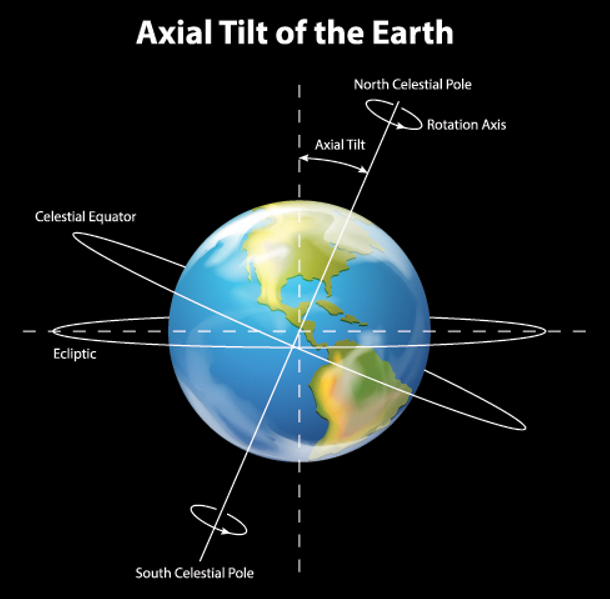Context:
-
Earth’s axis of rotation has been rotating faster than normal since the 1990s due to the significant melting of glaciers caused by global warming.
-
According to NASA, the spin axis drifted around 10 cm every year in the 20th century. It means, in a year, polar motion exceeds 10 metres.
Concept of earth’s axis of rotation and polar motion
-
Earth’s axis of rotation : It is the line along which Earth spins around itself as it revolves around the Sun.
-
The points on which the axis intersects the planet’s surface are the geographical north and south poles
-
Polar motion: Changes in the distribution of Earth’s mass around the globe also change the earth’s axis of rotation and as the axis moves, the poles move as well, which is known as polar motion.
-
Earth’s rotation will decrease if its mass is moved away from the rotation axis (From poles towards equators) and vice versa.

Key finding of the study-
-
Since mid-1990s, melting glaciers redistributed a large amount of water. It changed the direction of the routine polar wander to turn eastward and also accelerate it.
-
The average drift speed rose by around 17 times between 1995 and 2020.
-
The primary cause of polar drift is water loss from the Polar Regions, with contributions from water loss in nonpolar regions, which describes the eastward shift of polar drift.
What are the major factors causing the shift in Earth’s axis of rotation?
The rotation of the earth is affected by mass redistribution on and within the planet, such as shifts in soil, ice sheets, seas, and mantle movement. The following are the main forces that contribute to the mass redistribution-
-
Melting of glaciers: Climate change has caused billions of tonnes of glacial ice to melt into oceans. This has caused the Earth’s poles to move in new directions.
-
Groundwater pumping: The excessive use of groundwater has caused changes in groundwater storage in non-glacial areas. Further, it led to polar wander as most of it eventually joins the sea, thus redistributing the planet’s mass.